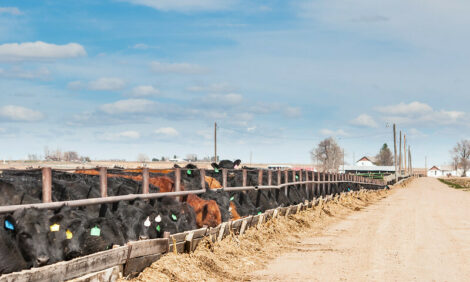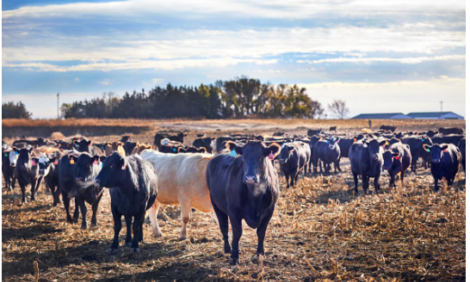



'Unfinished Business' with Corn, Soy Production
US - US corn prices drifted lower following the September USDA Crop Production report, reflecting expectations of a crop large enough to allow some rebuilding of stocks, writes Darrel Good.Soybean prices initially moved higher after the forecasts were released, reflecting expectations of smaller forecasts in future reports. Prices have now returned to pre-report levels.
Prices will likely continue to be unsettled as harvest reports become more numerous and the market forms expectations about the October production forecasts. In each of the previous three years, when the U.S. average corn yield was below trend value, the October production forecast was below the September forecast.
The difference ranged from 21 million bushels last year to 496 million bushels in 2010. Over the past 30 years, however, the October forecast was above the September forecast in 18 years and below the September forecast in 12 years.
This year, there continues to be a range of expectations about both the October forecast and final estimate of the U.S. average corn yield. Yield uncertainty is increased by the generally dry end to the growing season in many areas and by the late maturity of the crop where planting was delayed.
Over the past 40 years, the largest declines in the U.S average yield forecast from September to October occurred in 1974 (4.3 bushels), 1995 (4.5 bushels), and 2010 (6.7 bushels). In percentage terms the largest decline was in 1974 (5.5 percent) when widespread early frost damaged a late maturing crop.
Barring widespread early frost damage this year, the yield forecast in October is not expected to differ enough from the September forecast to alter the prospects for rebuilding stocks during the year ahead.
Corn production uncertainty this year also comes from uncertainty about the magnitude of the area to be harvested for grain. The USDA's June Agricultural Survey revealed more corn acreage planted and to be harvested for grain then expected by the market.
On August 15, The USDA's Farm Service Agency (FSA) released a prevented acres report that indicated 3.4 million acres of corn were prevented from being planted this year due to adverse weather conditions.
That report fueled expectations that USDA's National Agricultural Service (NASS) would eventually reduce the estimates of planted acreage and acreage harvested for grain. Typically, FSA certified acreage data is reflected in the October Crop Production report. FSA is scheduled to release updated estimates of planted acreage on September 17.
That report will influence expectations for the acreage estimates in the October Crop Production report. Without a change in the yield forecast, prospects for 2013-14 marketing year ending stocks below 1.5 billion bushels would require NASS to lower the harvested acreage estimate by more than two million acres. Such a large reduction seems unlikely.
Uncertainty about the NASS October forecast and the final estimate of the U.S. average soybean yield also reflects late season heat and dryness in a large portion of the production area and late maturity in some areas.
Some of the impact of adverse weather was likely reflected in the September yield forecast that was 1.4 bushels below the August forecast. Most do not expect the October forecast to be above the September forecast, but there is little agreement on the possible magnitude of a smaller forecast.
Over the past 40 years, the decline in the U.S. average yield forecast from September to October was one bushel or more in only five years: 1974 (1.1 bushels), 1980 (1.0 bushel), 1995 (1.1 bushels), 1998 (1.9 bushels), and 2003 (2.4 bushels). Given the severity of August and early September weather, a decline of one bushel or more certainly seems possible this year. However, a decline of 0.3 bushel or more would point to the need to further reduce consumption of U.S. soybeans during the current marketing year unless harvested acreage exceeds the current estimate.
The confidence in the current NASS forecast of harvested acreage is bolstered by the additional survey efforts in July.
At this juncture, there is a high probability that the 2013 U.S. corn crop will be large enough to result in a meaningful increase in stocks by the end of the current marketing year. Prospects of ample supplies point to an average marketing year farm price in the mid $4.00 range. Cash prices would be expected to follow a typical large-crop pattern of establishing lows at harvest time followed by modest increases that would about cover the cost of storage.
Soybean prices are expected to remain high relative to corn prices, with a marketing year average farm price in the high $12.00 range. The price pattern for soybeans may follow more of a short-crop pattern, however, particularly if the production forecast declines in October. Such a pattern would point to the highest prices at harvest and declining prices as consumption adjusts and the South American crop advances.
TheCattleSite News Desk

